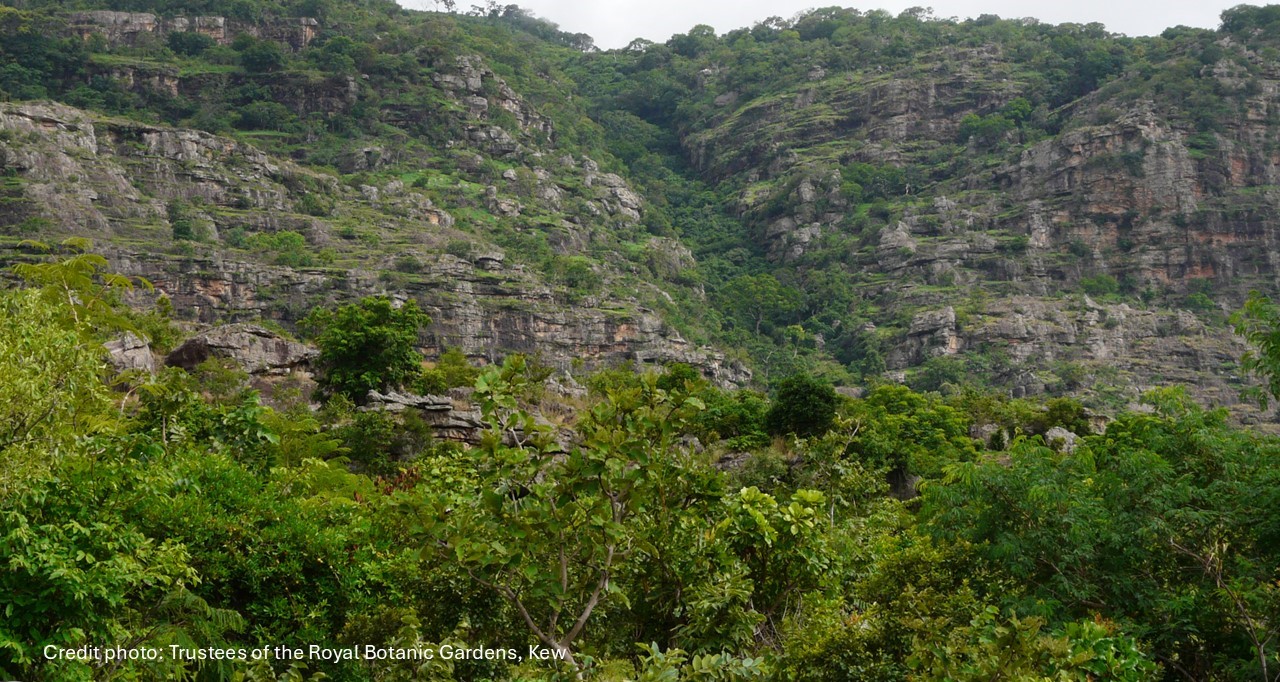
07 Mar Conservation of threatened trees in forested Important Plant Areas of Guinea (Phase II)
Community conservation of threatened trees in forested Important Plant Areas of Guinea (Phase II)
Partner: Royal Botanical Gardens, Kew (RBGK)
Years: 2024-2027
The mission of the Royal Botanic Gardens, Kew (RBGK) is to understand and protect plants and fungi, for the wellbeing of people and the future of all life on Earth, and its aspiration is to help end the extinction crisis and create a world where nature is protected, valued and managed sustainably. This project takes place in Guinea, West Africa, across multiple sites crucial for the conservation of threatened plants and/or demonstrating exceptional plant richness.

Apodiscus chevalieri Phyllanthaceae in fruit
This project builds on and safeguards the achievements of the first phase of the project in Guinée-Maritime (2020-2023) in which 840 threatened target tree seedlings were raised, 686 planted and c. 2.5 ha of habitat were restored, adding fire-break protection. RBGK will further embed understanding by our local community partners of the importance of multiplying, planting out and protecting the 12 targeted threatened tree species in TIPAs (Tropical Important Plant Areas) while expanding these activities further to raise another 6,000 seedlings over 3 years, restoring a further 50 ha of habitat.
RBGK is looking for solutions to the propagation of the 6 species previously found to be intractable due to poor seed availability or non-germination. RBGK will further improve monitoring and protection of trees both planted in restored and previously existing intact forest areas, and will incorporate elements from the 2023 National Conservation Action Plan (NCAP) for Threatened Trees of Guinea, an output from the first phase project, and build capacity around this. Such actions will strengthen the in-situ conservation and monitoring of the target threatened trees in conjunction with local communities, the forestry service, National Parks office and local prefectural authorities.




